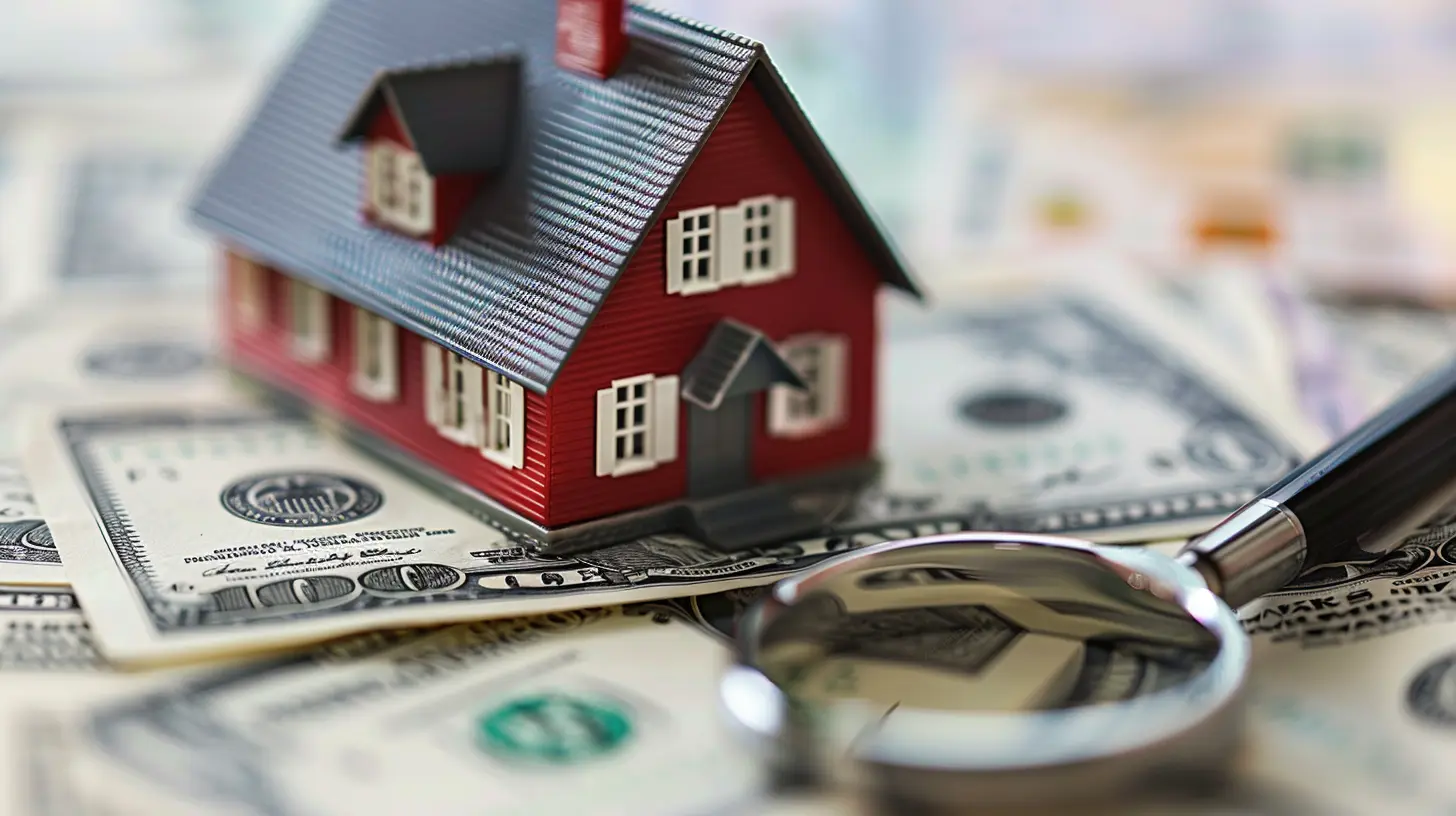What to Expect During the Home Appraisal Process
31 December 2024
If you're buying or selling a home, you've probably heard the words "home appraisal" tossed around. It can sound a bit intimidating, right? But don’t worry—this process is more straightforward than you might think. Whether you're a first-time buyer, a seasoned seller, or just curious about what happens behind the scenes, understanding the home appraisal process is crucial. Let’s dive in and break it down step-by-step so you know exactly what to expect.
What is a Home Appraisal?
Let’s start with the basics. A home appraisal is an unbiased professional opinion about the value of a house. Think of it as a health checkup, but for your home. The appraiser evaluates the property inside and out, compares it to similar homes in the area, and comes up with a fair market value. This value ensures that both the buyer and the lender don’t overpay for the property.Why does it matter? Well, lenders often require an appraisal before approving a mortgage. They want to protect their investment. After all, no bank wants to lend $400,000 for a home that’s only worth $300,000.
Why Home Appraisals Are Important
If you're on the buying side, the appraisal can save you from spending more than a home is worth. If you're selling, it ensures you’re pricing your property appropriately. And for lenders, it’s a safeguard to make sure their loan is backed by real value. Everyone’s interests are protected.But here’s where things get tricky: the appraisal isn’t always what you hope it will be. Sometimes, the appraised value might be lower than the agreed-upon sale price, and that’s when things get a little complicated. (We’ll touch more on that later.)
The Steps of the Home Appraisal Process
So, what actually happens during a home appraisal? Let’s break it down step-by-step.1. The Lender Orders the Appraisal
The process kicks off when the lender orders the appraisal. Even though you, as the buyer or seller, may foot the bill, the lender is the one making the arrangement. After all, the appraisal is in their best interest too.
Typically, the appraiser is a neutral third party—someone with no ties to either the buyer or seller. Their sole job is to determine the home’s fair market value.
2. The Appraiser Schedules a Visit
Once the lender has ordered the appraisal, the appraiser will set up a time to inspect the property. If you’re the seller, this is your chance to make your home shine! Are there little repairs you’ve been putting off, like a broken light fixture or a dripping faucet? Now’s the time to tackle them.
A clean, well-maintained home doesn’t just leave a good impression—it can genuinely influence an appraiser's perception of value.
3. The On-Site Home Inspection
Here’s where the magic happens (or at least most of it). During the on-site visit, the appraiser will evaluate the home’s condition, features, and overall appeal. They’ll examine:- The Exterior: Think curb appeal here. They’ll look at things like the roof, siding, and landscaping. Is the house in good shape, or does it need significant repairs?
- The Interior: Inside, the appraiser will assess the square footage, number of bedrooms and bathrooms, flooring type, kitchen features, and even things like storage spaces.
- Upgrades or Renovations: Did you just remodel the kitchen? Add a deck? Replace old windows with energy-efficient ones? These updates can positively impact the appraisal value.
- Defects or Issues: On the flip side, any visible problems—such as water damage, structural concerns, or outdated systems—can lower the value.
It’s worth noting that appraisers aren’t home inspectors. They won’t crawl into your attic to check for leaks or test every electrical outlet. However, if they notice significant red flags, it will be reflected in the appraisal report.
4. Comparing Your Home to “Comps”
After the on-site visit, the appraiser gets to work researching comparable properties—or “comps.” Comps are recently sold homes in the area with similar size, features, and condition. Think of comps as a way to level the playing field.If a house down the street with the same layout sold for $350,000 last month, that sets a benchmark for your home. The appraiser will make adjustments for differences (e.g., if your home has a finished basement and theirs doesn’t) and arrive at a final value.
5. The Appraisal Report
Once all the information is gathered, the appraiser compiles everything into an official report. This report typically includes:- The appraiser’s final valuation
- A detailed breakdown of how they arrived at the valuation (including comps)
- Notes on the property’s condition, features, and any issues
- Photos of the property
As the buyer or seller, you’ll get a copy of this report—it’s worth taking a close look at it!
What Happens If the Appraisal Comes Back Low?
Ah, the dreaded low appraisal. It’s not super common, but it does happen. If the appraised value comes back lower than the sale price, the deal might hit a speed bump. Here’s what you can do:- Renegotiate the Price: The seller could lower the price to match the appraisal. This is often the easiest solution.
- Make Up the Difference: The buyer can choose to cover the gap between the appraisal and sale price with cash.
- Challenge the Appraisal: If you believe the appraisal was unfair, you can request a second opinion, though it rarely results in significant changes.
- Walk Away: If none of the above options work, the deal might fall through (which no one wants, but sometimes it’s the best choice).
Tips to Get the Best Appraisal as a Seller
If you’re the one selling the home, you probably want that appraisal number to be as high as possible. Here are a few tips to help:- Tidy Up: First impressions matter, so clean your home thoroughly before the appraiser arrives. Declutter, dust, and consider sprucing up your landscaping.
- Highlight Improvements: Keep a list of all the upgrades or renovations you’ve made. Did you recently upgrade the HVAC system or install new windows? Let the appraiser know.
- Fix Minor Issues: Small repairs can make a big difference. Take care of that leaky faucet, replace burnt-out lightbulbs, and touch up any peeling paint.
- Provide Documentation: If there are homes in your neighborhood that have sold recently for a good price, share that information. It can help guide the appraiser’s research.
How Much Does a Home Appraisal Cost?
Home appraisals typically cost anywhere from $300 to $500 for a single-family home, though this can vary based on factors like location, property size, and complexity. The buyer usually covers the cost, but in some cases, the seller might foot the bill.Final Thoughts
The home appraisal process might seem like a mystery at first, but it’s really just a way to ensure fairness for everyone involved in a real estate transaction. Whether you’re buying or selling, knowing what to expect can make things smoother and less stressful. Remember, an appraisal is just one piece of the puzzle in achieving your real estate goals!So, the next time someone mentions a home appraisal, you can nod your head confidently—you’ve got this.
all images in this post were generated using AI tools
Category:
Home Selling TipsAuthor:

Travis Lozano
Discussion
rate this article
17 comments
Mary Gibson
Great insights! Essential tips for homebuyers and sellers.
April 2, 2025 at 3:38 AM

Travis Lozano
Thank you! I'm glad you found the tips helpful for your homebuying and selling journey!
Matteo McKinnon
Embrace the appraisal process as a stepping stone toward your dream home! Every evaluation brings you closer to understanding your investment and securing your future. Stay positive and trust the journey!
February 5, 2025 at 3:45 AM

Travis Lozano
Thank you for your encouraging words! Embracing the appraisal process is indeed crucial for understanding our investment and moving toward our dream home. Staying positive makes the journey even more rewarding!
Samantha McMurtry
Great insights! Helpful for first-time buyers!
February 1, 2025 at 8:24 PM

Travis Lozano
Thank you! I'm glad you found it helpful!
Quincy McNab
Understanding the home appraisal process is crucial for buyers and sellers alike. It not only influences the sale price but also impacts financing options. Preparing your property and knowing what appraisers consider can significantly enhance your results and streamline the transaction.
January 27, 2025 at 5:27 AM

Travis Lozano
Absolutely! Understanding the appraisal process can greatly benefit both buyers and sellers by ensuring accurate valuations and smoother transactions.
Oliver Barnes
Great insights! Understanding the home appraisal process is essential for both buyers and sellers. I appreciate the clear guidelines provided in this article—it will certainly help navigate expectations effectively.
January 19, 2025 at 9:41 PM

Travis Lozano
Thank you! I'm glad you found the article helpful in understanding the home appraisal process. Your feedback is much appreciated!
Kael McGrady
The home appraisal process isn't just about numbers; it reflects our dreams, investments, and the intricate dance of value that shapes our lives and communities.
January 16, 2025 at 12:26 PM

Travis Lozano
Absolutely! The appraisal process indeed encapsulates both the financial and emotional aspects of homeownership, highlighting the profound connection between our homes and our lives.
Alyssa Lawrence
Great insights! Understanding the home appraisal process is crucial for buyers and sellers. Thanks for sharing these valuable tips!
January 13, 2025 at 4:00 AM

Travis Lozano
Thank you! I'm glad you found the tips helpful. Understanding the appraisal process can indeed make a big difference for both buyers and sellers!
Zelda Carey
Great insights! Understanding the home appraisal process can make a significant difference. Your tips will empower buyers and sellers alike to navigate this essential step with confidence. Keep it up!
January 8, 2025 at 4:49 AM

Travis Lozano
Thank you for your kind words! I'm glad you found the insights helpful. Understanding the appraisal process is key for both buyers and sellers. Appreciate your support!
Iris McWilliams
In the dance of value, whispers unfold, A home's worth revealed, stories retold.
January 6, 2025 at 5:28 AM

Travis Lozano
Thank you! The appraisal process truly encapsulates the essence of a home, revealing its unique stories and value.
Destiny Rodriguez
Think of the appraisal as a reality check for your home’s worth. It’s not just numbers; it’s your property’s moment to shine—or face the music.
January 5, 2025 at 2:02 PM

Travis Lozano
Absolutely! An appraisal provides valuable insight into your home's value, highlighting its strengths and addressing potential improvements. It’s an essential step in the selling process.
Rosalyn McNeil
Curious about appraisal tips? What factors influence value most during the home appraisal process?
January 5, 2025 at 5:43 AM

Travis Lozano
Key factors that influence home value during an appraisal include location, property condition, comparable sales in the area, and recent market trends.
Jinx Fuller
Exciting journey to your new home!
January 4, 2025 at 8:02 PM

Travis Lozano
Thank you! We're thrilled for this journey too!
Thea McGill
This article provides a clear overview of the home appraisal process, highlighting its significance for buyers and sellers. It effectively outlines key factors influencing appraisals while also managing expectations. A valuable resource for navigating this crucial step in real estate transactions.
January 3, 2025 at 9:37 PM

Travis Lozano
Thank you for your feedback! I'm glad you found the article helpful in understanding the home appraisal process and its importance for both buyers and sellers.
Delia Carr
Clear expectations and communication are key to a smooth home appraisal process. Stay informed!
January 3, 2025 at 12:38 PM

Travis Lozano
Absolutely! Clear communication ensures all parties are aligned, making the appraisal process much smoother. Thanks for sharing!
Zephyrian McQuillen
Great article! Understanding the home appraisal process can really ease any worries. It's an exciting step towards owning your dream home, and knowing what to expect makes the journey even more enjoyable. Happy house hunting! 🏡✨
January 2, 2025 at 1:37 PM

Travis Lozano
Thank you for your kind words! I'm glad you found the article helpful. Happy house hunting! 🏡✨
Ursula Graham
Home appraisal: where dreams meet reality!
January 1, 2025 at 6:00 AM

Travis Lozano
Thank you! Indeed, the home appraisal process is a crucial step in turning your dreams into reality by ensuring a fair market value for your property.
Savannah McCarty
Expect a home appraisal to feel like a date with your house—awkward pauses, uncomfortable questions, and a thorough inspection of all the 'bad habits' (hello, that crayon mark on the wall). Just hope it’s a match made in real estate heaven and not a ‘thanks, but no thanks’ moment!
December 31, 2024 at 7:33 PM

Travis Lozano
Great analogy! The appraisal can definitely feel like a revealing first date for your home. Fingers crossed for a positive outcome!
MORE POSTS

Selling a Condo: Tips for First-Time Sellers

The Best Tools to Automate Your Real Estate Marketing

How to Find a Real Estate Broker Specializing in Luxury Properties

Proven Market Timing Secrets for Real Estate Investors

How to Review and Compare Offers When Selling Your Home

The Key Traits That Set Exceptional Real Estate Brokers Apart

Can Zoning Regulations Affect Your Property Investment?

How to Keep Your Vacation Home Safe When You’re Not There

Important Legal Considerations When Buying a Vacation Property

How to Use Your Vacation Home as a Tax Deduction

How to Market Your Vacation Home to Attract High-End Renters